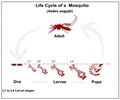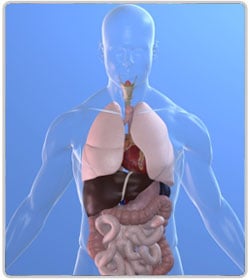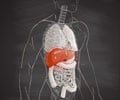What is Hepatitis A?
Hepatitis is a generic term describing inflammation of the liver: "Hepatos-" ("liver") and "-itis" ("inflammation"). There are many causes of hepatitis, including viruses (Hepatitis A, B, and C viruses), toxins (such as alcohol), and autoimmune diseases.
It is found that there are an estimated 1.4 million cases of hepatitis A every year.
Hepatitis A occurs sporadically, however over the decades it regularly has appeared as an epidemic worldwide.

The Hepatitis A virus is most often contracted by eating contaminated food, usually shellfish. It is the most benign of the hepatitis viruses and usually has no long-term side effects.
Hepatitis A causes inflammation of the liver and leads to jaundice.
The liver is the largest internal organ in the body (Skin is larger than liver but strictly is categorized as a tissue) and, arguably, one of the most complex. It occupies the entire upper right quadrant of the abdomen and performs more than one hundred vital functions. It weighs about 1.5 kg (3.5 lb) and is triangular organ with a pinkish-brown hue.
The liver processes the nutrients that the body requires, including proteins, glucose, vitamins, and fats. It manufactures bile, the greenish fluid stored in the gall bladder that helps digest fats. It reduces the toxicity of ingested substances, including alcohol, ammonia, nicotine, drugs, and other harmful by-products of digestion. Old red blood cells are removed from the blood by the liver and spleen, and the iron is cycled to the bone marrow to make new ones. Finally, the liver produces most of the blood clotting factors necessary for proper hemostasis. Damage to the liver can impair all of these important functions, resulting in severe illness. Complete liver failure is fatal, but exposure to Hepatitis A is extremely unlikely to result in this.
Causes of Hepatitis A
Poor hygiene and contaminated water make hepatitis A virus as one of the most frequent causes of food-borne infection worldwide. The epidemic in Shanghai in 1988 affected about 300 000 people.
The Hepatitis A virus is passed out through the stool of an infected person 2 to 3 weeks before symptoms occur and during the first week of illness.
Blood and secretions of an infected person may also spread the disease, but these are rare modes of transmission compared to the other hepatitis viruses. The disease is predominately transmitted by contaminated food (shellfish) or water. The virus does not remain in the body after the infection has resolved. Hence this disease has no carrier state.
Symptoms of Hepatitis A
The symptoms associated with hepatitis A are similar to flu, but the skin and the eyes may become yellow (icterus) because the liver is not able to filter bilirubin from the blood. The other symptoms are:
- Loss of appetite
- Nausea and vomiting
- Fever and body pains
- Pale or clay colored stools
- Dark urine

Diagnosis of Hepatitis A
- Physical examination shows an enlarged liver.
- A blood test is needed to detect circulating antibodies to the hepatitis A virus.
- Liver function tests are done to detect increased liver enzymes.
- Ultrasound of the liver maybe required if the jaundice persists longer.
Treatment for Hepatitis A
There is no specific treatment for hepatitis A. Taking rest is very important when the symptoms are most severe. People with acute hepatitis should avoid alcohol and any other substances that are toxic to the liver. Most people’s symptoms resolve fully within one week, and within one to two months, the liver is completely healed. After exposure to Hepatitis A, one forms antibodies in the blood that prevent future illness upon repeat exposure to the virus.
A Hepatitis A vaccine is available that is 95% effective in preventing the disease. The vaccine results in immunity for up to 15 years and this immunity can be renewed with booster shots as needed. The Hepatitis A vaccine is recommended for all children over the age of one, people with chronic liver disease or those receiving concentrated blood products (e.g., hemopheliacs), those engaging in high risk sexual activity, those residing in areas where the virus is endemic or when an outbreak has occurred, and foreign travellers to high risk areas such as the Indian subcontinent, Africa, Central America, South America, the Far East, and Eastern Europe.



















